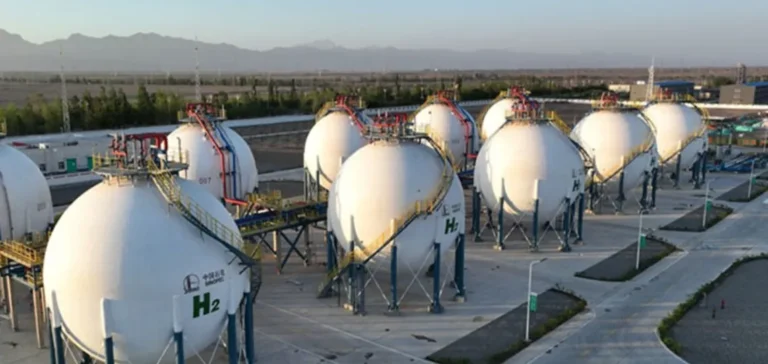China has elevated hydrogen to the rank of strategic priority in its 15th Five-Year Plan (2026–2030), a move accompanied by significant increases in public investment in infrastructure, production capacity and research and development. This decision reflects Beijing’s industrial policy to convert excess renewable energy into a competitive advantage in the hydrogen sector, with a strategy centred on cost efficiency and scale.
Massive public investments to structure the national supply chain
The National Energy Administration (NEA) and the National Development and Reform Commission (NDRC) are coordinating investment programmes to connect renewable energy production sites to hydrogen electrolysis and transport infrastructure. The strategy relies on substantial budgetary support for building H₂ stations and financing heavy-duty hydrogen vehicles in mining areas, particularly in Inner Mongolia, Xinjiang and Guangdong.
Public authorities directly subsidise the construction of electrolyser facilities, with 60% of global electrolyser capacity now located in China. This support has led to a 33% domestic price drop between 2022 and 2024 for alkaline (ALK) technology. The cost of green hydrogen production currently stands at around $3–3.5/kg, with projections to reach $1.5–1.75/kg by 2030, driven by falling photovoltaic module prices and equipment standardisation.
An investment lever to absorb energy overcapacity
Public funding also targets the absorption of overcapacity in the solar and wind industries. In high-curtailment regions such as Xinjiang, off-peak low-cost electricity is redirected to electrolysis to stabilise the grid. Beijing considers this an optimisation method for capital already invested in renewables while also stimulating new industrial demand.
State-owned enterprises such as Sinopec Group, State Power Investment Corporation (SPIC) and CHN Energy lead integrated hydrogen hub projects. The Kuqa site, powered by 300 MW of solar for 20 kt/year of green hydrogen, exemplifies efforts to capitalise on public investment through large-scale pilots. In Ordos, a complex combining wind, solar and hydrogen production supports the conversion of heavy mining equipment to hydrogen use.
Public funding for industrial uses and innovation
The government also finances substitution projects in the refining and chemical sectors to replace grey hydrogen with green hydrogen. Industrial complexes operated by Sinopec and Baowu Steel Group benefit from tax incentives to adopt hydrogen-based processes, especially for hydrogen-based direct reduced iron (H₂-DRI) steel production. Public aid includes accelerated depreciation, value-added tax exemptions and demonstration programmes.
Central authorities are backing next-generation electrolyser R&D via public-private partnerships involving manufacturers such as LONGi Hydrogen and PERIC Hydrogen Technology. These programmes aim to consolidate the national industry and promote technology exports to emerging markets in Asia and the Middle East.
External pressure and geo-economic reconfiguration
China’s ambitions come amid rising trade tensions. The United States has extended Section 301 to include electrolysers, increasing tariffs on Chinese equipment, while the European Union will apply the Carbon Border Adjustment Mechanism (CBAM) to hydrogen from 2026. These constraints are prompting Beijing to strengthen economic alliances with Gulf and Asia-Pacific nations, including industrial development partnerships with Saudi Arabia and the NEOM project.
These external barriers have not slowed domestic momentum: public investments ensure stable demand and reduce the risk of underused infrastructure. At the same time, China continues exporting low-cost equipment, increasing pressure on Western manufacturers and reshaping global hydrogen market dynamics.






















